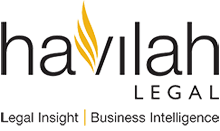Belief is just the beginning…
We all know and read constantly that change is the minimum requirement for continuing success. I think what is really true is that people talk the language of change without really committing to it; because nothing ever really changes unless your view of the world or your mindset changes.
Steven Covey in particular referred to this as a “paradigm shift”.*
This is really the process of transformation.
Transformation comes from challenging your old beliefs or views and substituting new ones that can unlock the door to wonderful achievement in your life or organisation. After this has occurred, the commitment to move forward is much easier to find, because of this clarity of your belief.
Whether an individual, a team, an organisation, a community or a society, when the disagreement between our existing beliefs and the different facts we are presented with becomes so great as to be irreconcilable, we ultimately have an uncomfortable choice.
We can use a prejudiced mind to hang onto our existing beliefs more strongly, or we can experience a psychological shift which reprograms our whole psyche, or even the entire culture of an organisation to a new belief system.
As well as being an uncomfortable experience, it is the mark of genuine wisdom to be able to experience this transformational change; – as all our existing views and beliefs should, frankly, be able to withstand this critical review shouldn’t they?
Isn’t a healthy culture of critical review the hallmark of a successful board, management team, sporting team, educational facility, or government agency?
The Challenge
The challenge of every CEO or MD who aspires to create something more than they currently have, is to accept this difficult process of change.
Easier said than done! I know from my own experience that it isn’t easy and is the cause of many a sleepless night! There is an opportunity for great frustration to arise when the vision you are seeking for the future can be swirling though your mind, but is not yet in line with what you can see right in front of you. I think this is because change is the main challenge and not something that the world at large does terribly well.
If you set about the mission to turn your organisation around, as I believe is entirely possible; you need to start with the right leadership and management mindset. Even with this, you still need to source the right expertise with the right set of tools designed for this momentous and rewarding task.
Facilitating our organisation on this continuous improvement expedition and a contributing expert to this article, we have been working with Craig D’Souza, a specialist in consulting with business leaders to build robust, resilient and high performing organisations.
It is through Craig’s innovative and proven approach to change within organisations, including his expertise and guidance that we all have the confidence and belief that we will not become another statistic and fall victim to the most predictable reasons that change efforts fail…..
As Craig has reflected with me – the measure of the results from really effective consulting is directly proportional to the resulting level of dissatisfaction (“the uncomfortable experience”) plus the wisdom gained from actually experiencing that very discomfort.
Now I know what you’re thinking! You must be mad to even contemplate doing that – Why pay someone to make you feel uncomfortable and challenge your nice comfortable closely held beliefs ……..so you grow from your own pain?
But here’s the point!
The Cost of Standing Still
In our reflections about implementing the difficult process of change, Craig also shared his experience that the cost of not applying this philosophy is also the cause of all human limitation.
It’s the very beliefs we hold on to which will either propel us forwards with great momentum, satisfaction and success or will alternately create the chains that will forever hold us back from reaching our potential.
The problem is not your closely guarded beliefs themselves, but the resultant affect they have upon our lives.
Craig shared more than one experience where he has seen so much pain people cause themselves by continuing to hold onto their intractable beliefs that betray them.
Craig’s advice is to always be willing to replace a current belief with one that serves you better.
I have found that this experience of being open to change makes the world of difference, leading to more success and joy and is personally very liberating.
So what’s the strategy moving forwards in 2015?
If you are a well organised company, you may have already been through a lot of thinking and planning sessions about where you are and what you want to set about achieving this year.
If you are like me, this may not yet have translated into the changes you would have like to have seen implemented in your organisation already.
While the core strategy may be there and is important; arguably even more important is to converge on a clearly defined sharply focussed path to those goals, so that the many decisions that follow are much easier to make, and will be clearly and strongly aligned with your key intent.
Don’t you think your staff or your stakeholders want to see that alignment clearly? How else can they buy in?
So first it is time to get really focussed! If you feel you need help then obtain the assistance of an experienced expert to help you. Don’t be surprised if he or she asks you difficult questions which really challenge your current beliefs. That’s good pain …. Remember?
Now get efficient with your implementation…
I have previously written about capturing all the processes in your organisation and mapping them out to ensure you are efficient. You know and expect it will inevitably cause resistance as people resist change! “I’m too busy” has become almost like a recorded message for people in organisations today. The irony is that being too busy is at least partially the fault of inefficiency.
We know all too well that it’s a reactive statement, because if we’re always too busy, then when are we going to get around to creating a better life in which we’re not too busy to do the really important things…
Developing Effective Systems and Processes
There is a strict hierarchy to follow in the exercise of becoming efficient. As outlined by Craig there are four main priorities in developing effective systems and processes:
- Compliance with the law so the process will legally protect you and your customer or stakeholder; (and there are so many laws to consider in so many situations)
- Effectiveness so the process achieves what it’s supposed to achieve;
- Efficiency within the bounds of compliance and effectiveness;
- Standardisation in the organisation so it happens the same way every time.
The most common mistake Craig sees is to put efficiency first; just to deliver quickly. Often corner cutting hides behind the disguise of “efficiency” backed up with the classic excuse: – “but we’ve always done it that way”.
Clearly that just doesn’t cut it.
If you are genuinely trying to achieve an efficient process driven organisation delivering on its objectives and making the implementation of your work easier, more satisfying and more effective, then at some stage you are going to need to challenge your fellow board members, management team, staff or stakeholders to justify why they aren’t implementing in this manner.
If the resistance from any one stakeholder group or any one employee can’t be negated; well there is only one real choice. It simply has to occur in accordance with the hierarchy described above.
As for excuses? – “Tell it to the judge.”
Bruce Havilah
Contributing Expert:
Craig D’Souza
Business Velocity

